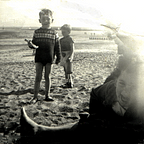The Beatles Weddings
Pop stars were not supposed to get married. Five weddings and a divorce later…
In November 1961, Brian Epstein agrees to manage The Beatles — on condition that they sharpen up their act and their appearance. No more leathers or eating on stage or chatting with the audience. The new image will be the one they will project in A Hard Day’s Night. Four friendly, funny, charming boys. Young men who will one day make excellent sons-in-law.
Though not any time soon.
The template does not include steady girlfriends pop stars need the appearance of availability. Fifteen-year-old Sandra from Shropshire is unlikely to one-day walk down the aisle to join Paul McCartney but she can dream of doing so. Until the prizes are claimed, every fan can still enter the love lottery.
The Beatles tear up this unspoken pact during their seven years on the international stage, upending other social taboos as they do so
All four marry get married before the band breaks up in 1970. One of them twice. None of these weddings are in church.
Two Beatles marry foreign divorcees.
Two of the brides are pregnant as they say, ‘I do’.
In June 1962, The Beatles secured their first record contract with Parlophone. A month later John Lennon approached his manager with unwelcome news. “My girlfriend is pregnant,” he confided. “And I’m going to marry her.”
At the time, a ‘shotgun wedding’ was potential PR disaster for an aspiring pop star. Less scrupulous managers would have pressed the young couple to consider other options. Instead, Brian agreed to be John’s best man.
Two years later, Brian Epstein performed the same role in similar circumstances. Another visit to another registry office would take place in 1966. By the time of his death in August 1967, three Beatles were married and one was apparently heading in the same direction.
As in so many areas, The Beatles were establishing new social protocols. After four years of Beatlemania they still dominated the cultural landscape. Previous bands had generally imploded after their third single. The Beatles had surprised everyone — including themselves — by sticking around .
They were now in their mid-twenties. That meant moving out of that mythical four-in-one house in the film Help! Time to do the boring stuff: getting married buying houses, having kids. Photos began to reflect these new circumstances. The suits were replaced by clown clothes. The smiles by the weary scowls of men worn down by new responsibilities.
Married life
Elvis marked the transition to adulthood by going off with the army to Germany. Three of The Beatles opted for suburban Surrey. This might have been a hard sale were it not for the popularity of the brides concerned. Gentle Cynthia, lovable Maureen, glamorous Patti. These charming young women offered new role models to young female fans whose prospects of bagging a Beatle had been dashed.
Heartbroken teens had the consolation of knowing that their heroes had, as it were, gone to good homes. That suited their parents, too, and kept the opinion leaders onside.
For those looking for slightly racier role models there was Paul McCartney. He stayed in London, roaring around town in his Austin Cooper like Toad of Toad Hall. Paul and his glamorous girlfriend, the actress Jane Asher, were a celebrity couple, in demand at all the hippest parties and openings.
Paul was also plugged into the social worlds surrounding experimental music and art. This gave him cultural cache, while his good manners and cheerful demeanour reassured mainstream opinion. There was a little puzzlement as to why he lodged with his (supposed) future in-laws but this was assumed to be a staging post to eventual marriage.
The Beatles’ tours were like Fellini’s Satyricon John Lennon
We now know that there was a chasm between the carefully cultivated clean-living public image and their real lives. All four Beatles took drugs and had multiple sexual partners on tour. Members of their entourage not only tolerated this but ensured that photos or other incriminating information did not get into the public domain.
Wives and girlfriends were obliged to tolerate this one-sided arrangement. Even without touring, Beatlemania created intolerable pressure on personal relationships. Within a year of Brian’s death, two of these seemingly rock-solid unions would shatter.
Jane and Paul announced their formal engagement on Boxing Day only to do a 360 reversal in June 1968. Jane announced the sad news while appearing on a BBC TV show, Dee Time: “I haven’t broken it off,” she said pointedly, “but it is broken off, finished.”
Meanwhile, all was not well over in Weybridge, where John Lennon was staring glassy-eyed at the blue suburban skies. The end of touring had reduced the scale of his infidelity. It had not made him happy. Or less angry.
Enter Yoko. Enter Linda.
